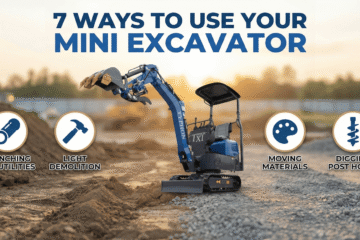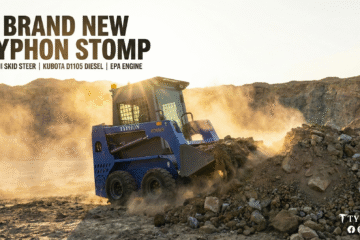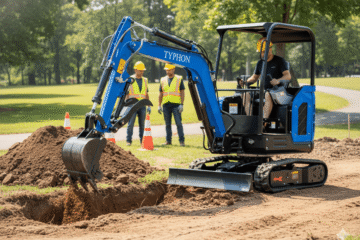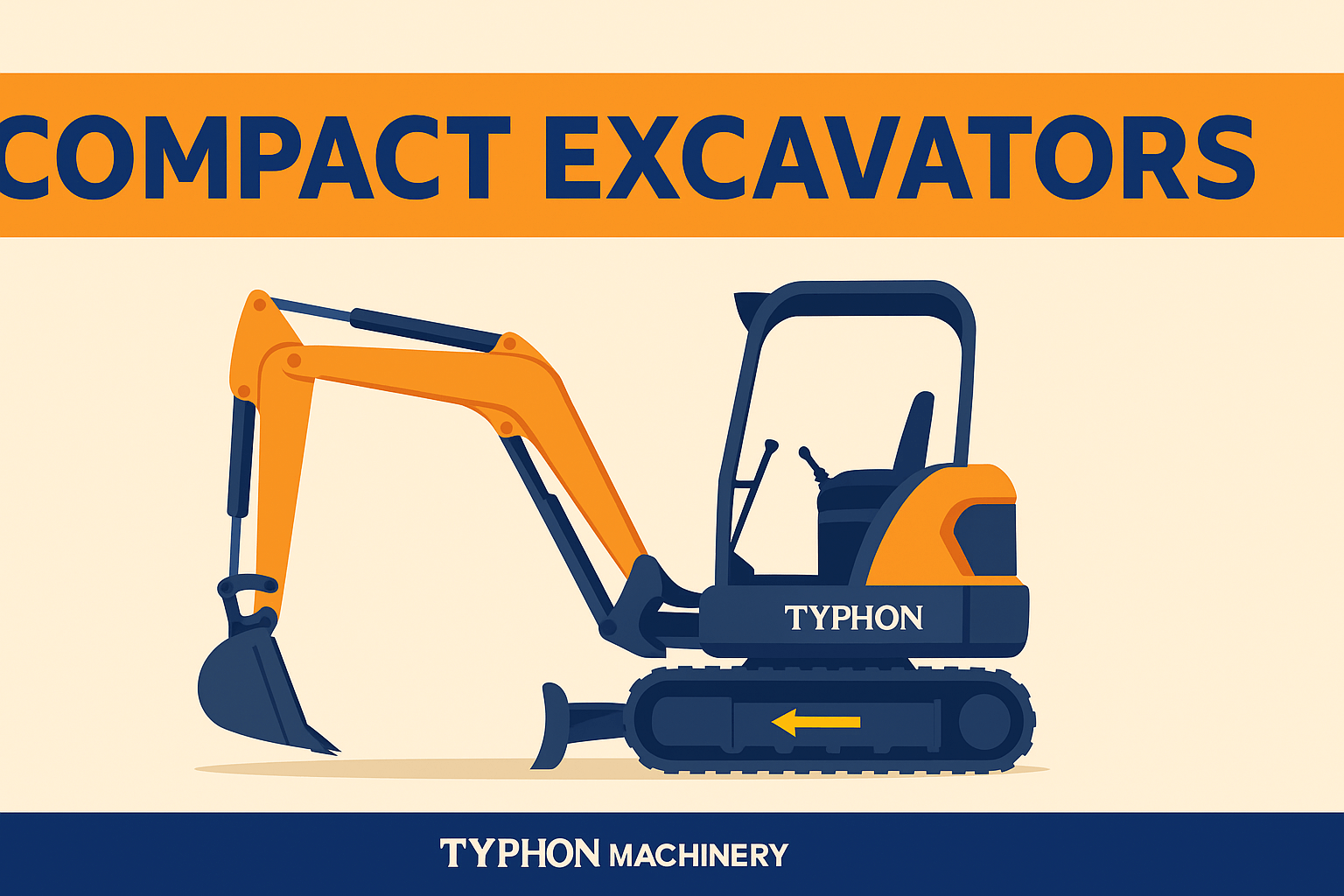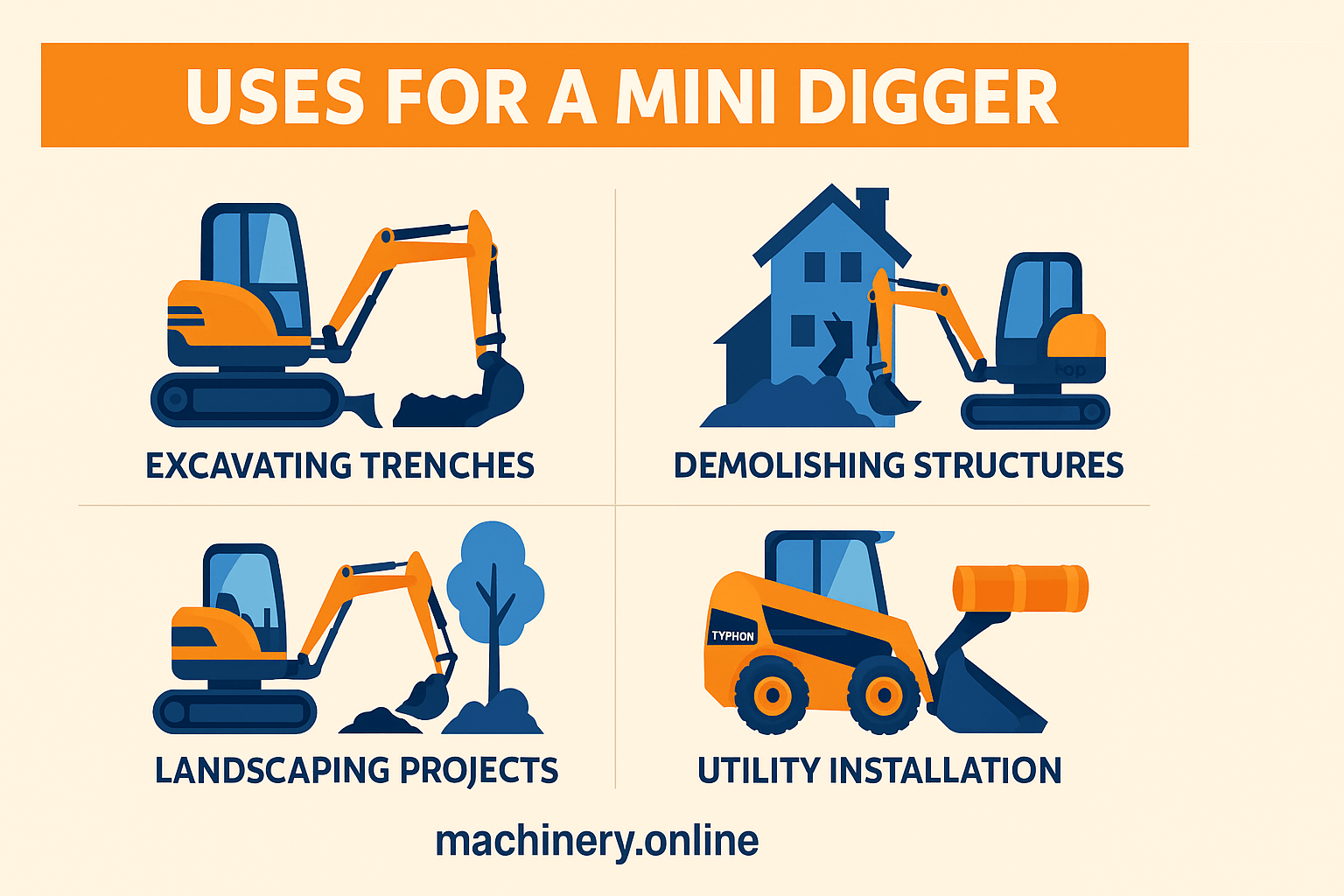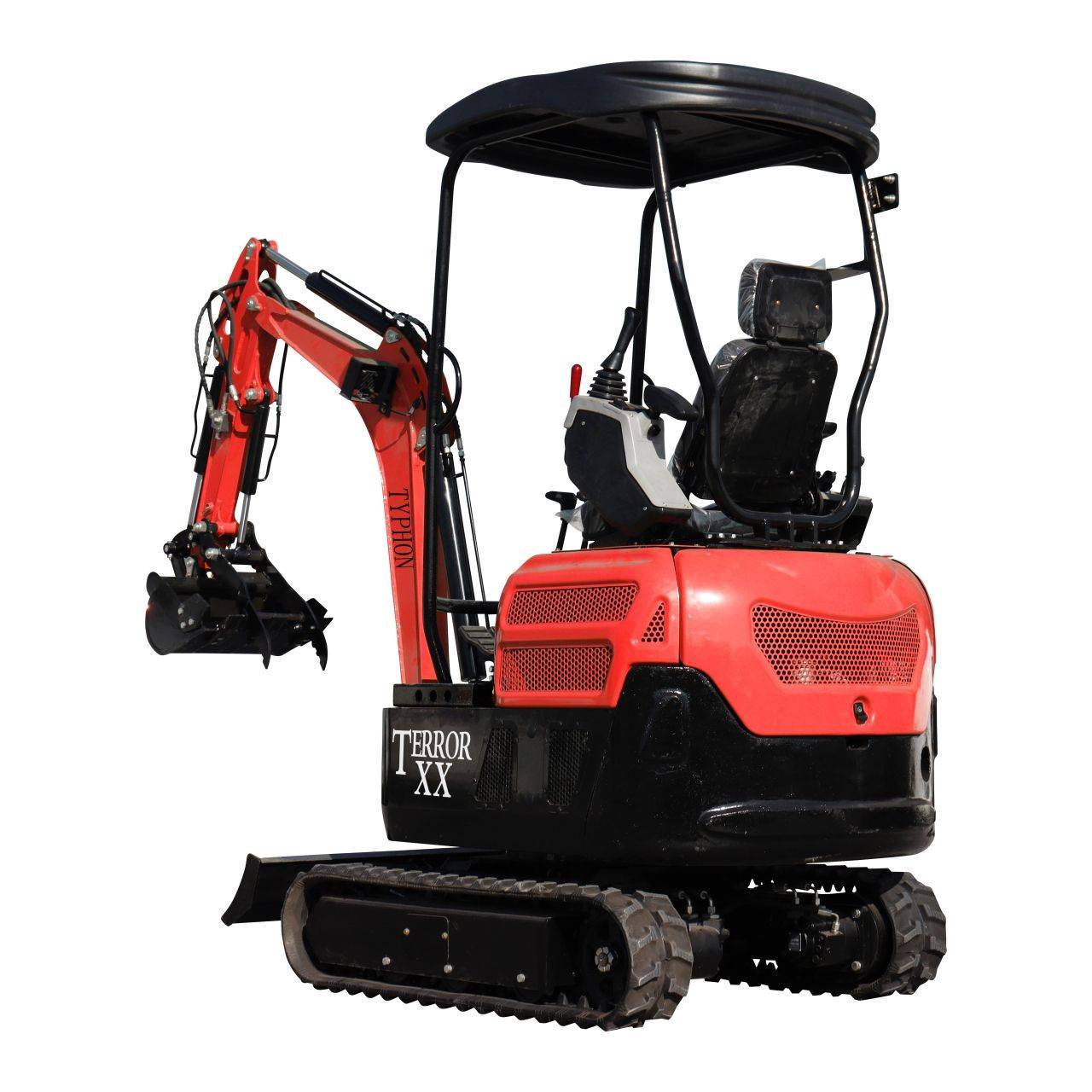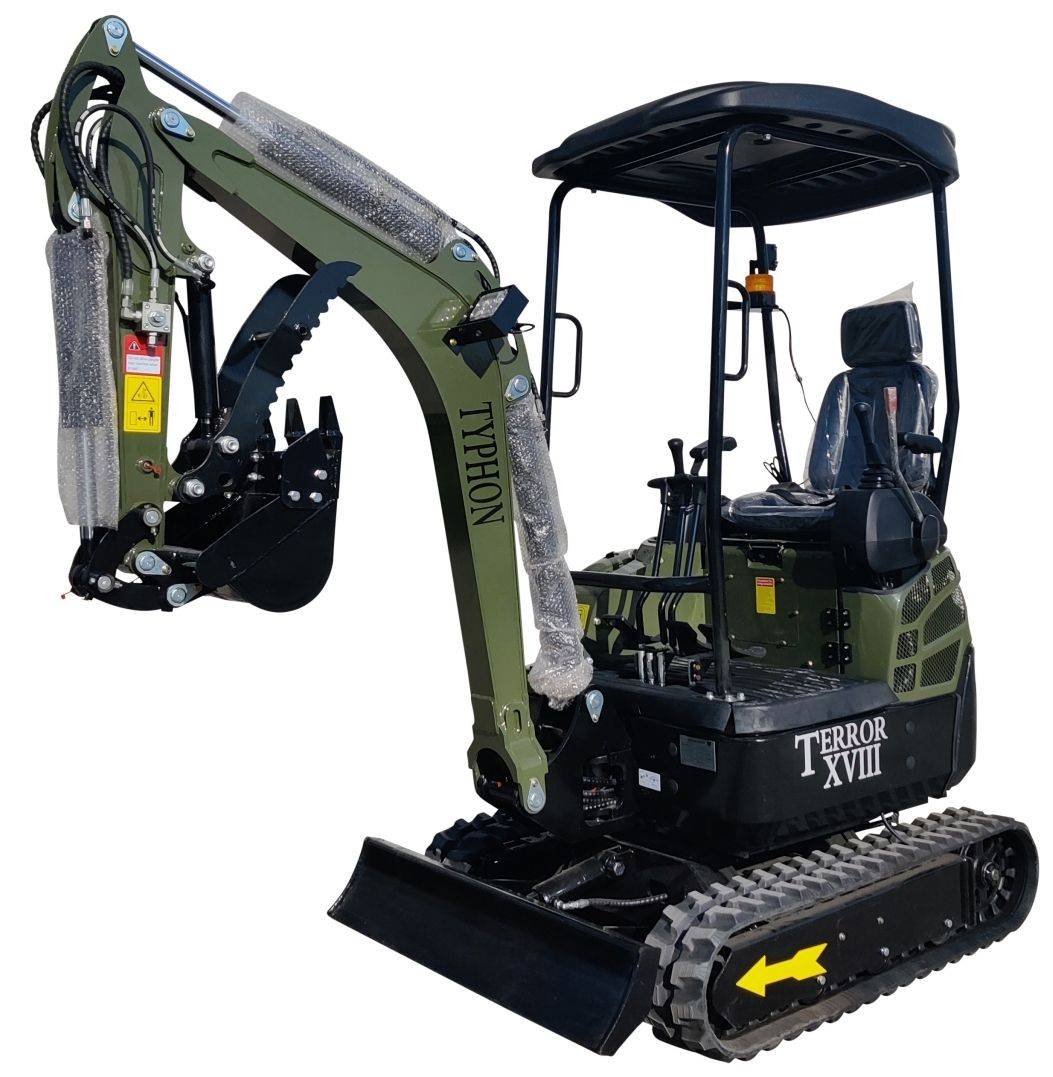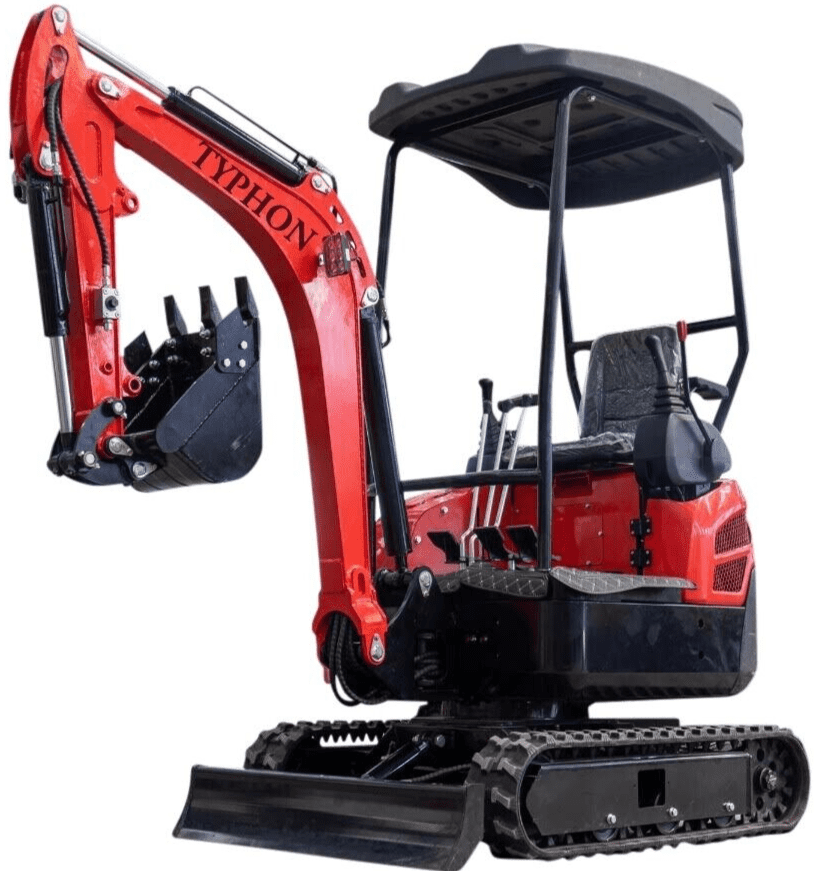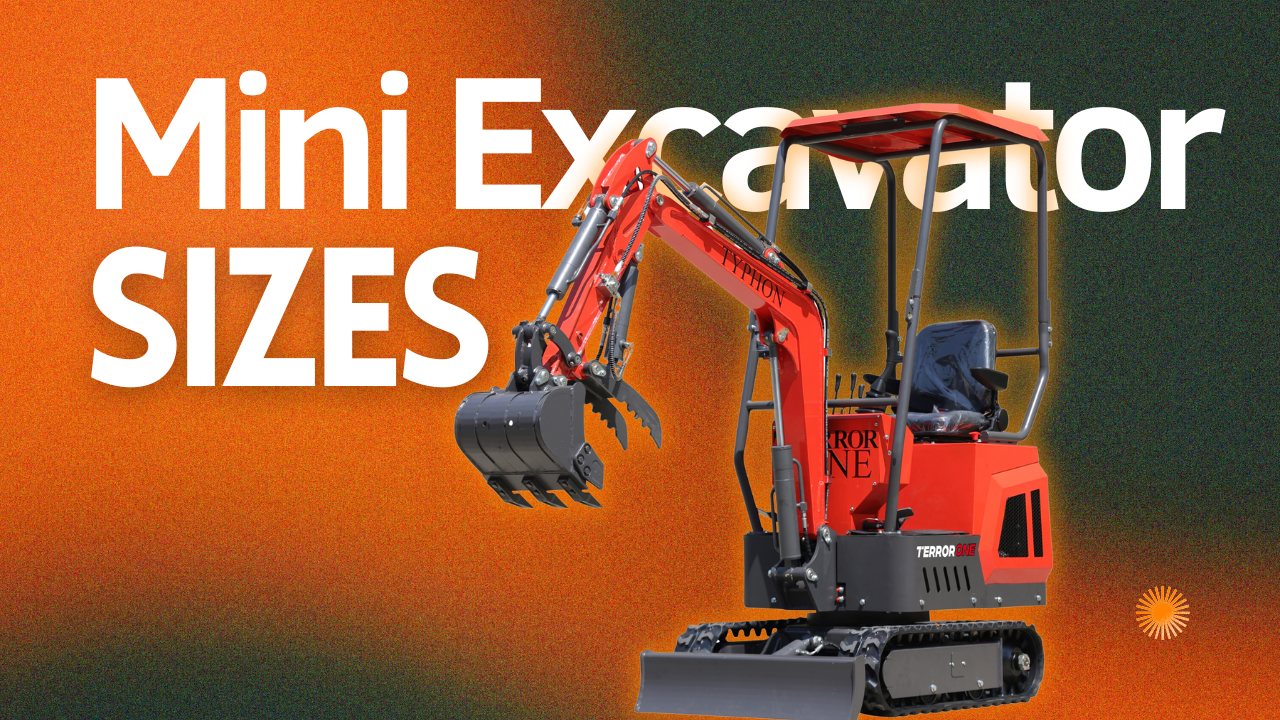
Mini Excavator Sizes
Professionals in gardening and building can make use of the flexible machines known as excavators. Still, a conventional excavator is large equipment that usually won’t fit in small areas of work. Here is where the mini excavator finds use.
The compact design of a micro excavator enables it to negotiate and run inside smaller job locations. Mini excavators are still available in numerous sizes even now. This all-inclusive information on mini excavator dimensions and advice on choosing the correct size for your next job will help.
Most Common Mini Excavator Sizes
The weight of the excavator determines all its dimensions. More precisely, although they can run as tiny as under one ton, micro excavators are categorized as anything under 10,000 pounds. Although the weight of the machine finally defines its lifting ability when selecting a mini excavator , this does not always indicate that picking the biggest size would do the task quicker.
Let’s examine more closely the most often used mini excavator sizes and their applications.
Less Than 1-Ton Mini Excavator (800-1,999 lbs)
Smaller projects might find a few excavators that weigh less than a ton to be quite useful. Their small size makes operating and maneuvering them simple, especially in tight areas. For a house owner working on a do-it-yourself landscaping job, their small size make them the perfect machine.
Digging trenches for utilities or other related jobs like installing pipes for a sprinkler system makes a tiny excavator of this scale rather helpful. These excavators cannot rip through rocks and very compact terrain the way an excavator of a larger weight can due to their small working weight. Choose the next size up if your job calls for working in a small area yet requires more power.
The main lesson is that for modest operations like yard work on a property with limited area, mini excavators under one ton are good instruments. Compact terrain might, however, call for a bigger digger.
1- to 2-Ton Mini Excavator (2,000-4,000 lbs)
Though they have some more power and digging capability, mini excavators weighing one to two tons remain somewhat small. Most brands have mini excavators in this range; for many, it’s the smallest size they have available. One well-known brand with plenty of variations is Bobcat.
Perfect for trenching and ground preparation for utility and drainage system installation, mini excavators in this size range can dig between seven and eight feet. A contractor might also use this size to run a grading bucket, which levels the ground for a flat surface.
Between one and two tons, excavators effectively move and dump hard-to-carry items like stone, dirt and wood around a construction site. Small demolition jobs like asphalt removal need for an excavator this size range.
3- to 5-Ton Mini Excavator (6,000-10,000 lbs)
Although their size is still somewhat small, micro excavators provide more power and utility. Typical tasks for this size excavator are trenching, foundation digging, general construction site preparation.
For contractors working on pipe or cable installation, an excavator of size can dig trenches between eight and twelve feet—perfect. This excavator’s extra power is fit for excavating foundations fit for houses and other non-commercial buildings.
With its small size, a mini excavator may accomplish site preparation chores including plowing snow and cleaning ground by moving debris.
6- to 10-Ton Mini Excavator (12,000-20,000 lbs)
This is the biggest size class of excavators you would still find reasonable. Look at a bigger excavator from this category if you want the maximum power and digging capability yet within a limited work area.
Although they can dig up to 15 feet deep, mini excavators with a six- to ten-ton operational weight should be checked to make sure they meet all your digging requirements. Usually, a tiny excavator works in trenching and backfilling. Smaller businesses and households can also have foundations dug with this kind of mini excavator.
Within this size class, other applications for excavators include demolition operations, clearing heavy goods from sites and stump and rock removal from land plots.
Mini Excavator Specs and Considerations
Although weight defines all excavators, additional factors should be taken into account before leasing a little excavator. Choosing the correct mini excavator for a job depends much on digging capacity, size, and engine power. The eight most often used excavator specifications are closely examined here.
Operating Weight
Operating weight helps to classify mini excavators. A mini excavator’s operational weight is its weight while in use. Calculating the weight of the machine, an average-sized operator, and the gasoline keeping it running helps one to ascertain the running weight.
The machine’s running weight is practically the counterbalance to the bucket’s load. A larger operational weight is required if a project calls for significant lifting and excavation through thick materials.
Digging Depth
The depth or digging capability of an excavator dictates how far it can probe a surface. A typical rule of thumb for micro excavators is that their size determines their digging capacity. Of course, excavators have different brands and models, so you should always be sure that the digging parameters of a machine will fit your demand.
Overall Dimensions
The primary reason anyone runs a tiny excavator is its modest design that fits and works in confined areas. Still, mini excavators still vary in form and scale. To be sure the height, breadth, and length of the excavator are the best sizes, double-check the region you are operating in’s measurements.
Engine Power
Usually measured in horsepower (HP) or kilowatts (kW), engine power of a mini excavator The engine power rating indicates engine capability for output. Greater its power level, an engine may use more energy breaking through compact surfaces and mining large weights.
Bucket Breakout Force
Measuring in pound-force, bucket breakout force is the most force an excavator bucket can generate. The machine’s digging and lifting capability depend on its breakout force; hence, knowledge of it is vital. The machine is more suited for managing scooping up big loads, basically the greater the breakout force.
Arm Reach
The reach of the arm is its distance from the base. If you operate in a tiny space, this standard might not be as essential; nonetheless, using an arm too lengthy inside a limited work area could prove challenging. Always confirm that the arm’s reach of an excavator is long enough to fit your digging and reaching requirements, but not so long that it causes problems for the project.
Swing Space
The swing of a mini excavator is the area needed for the machine to spin free from collision with any obstructions. Working in tight or limited areas, the excavator’s tail swing and boom—that is, arm—are taken into account. There are low- and zero-swing excavators for use in confined areas.
Dumping Height
An excavator’s dumping height is the highest the arm of the machine may scoop or dump material from its bucket. Measuring the ground to the highest point of the bucket when it is completely extended and in the dumping posture helps one to find the height.
Since it dictates the height of the dumpster, vehicle or other container the machine can load or unload, dumping height is a major factor.
Mini Excavator FAQ
We got you covered if you still seek more details about mini excavators. These are the responses to some of the most often asked issues concerning mini excavators and their restrictions. Our free ebook guide below also provides further information regarding small excavators.
What Are the Limitations of a Mini Excavator?
Although they are clever tools, micro excavators have some restrictions to be considered. These are some of the most often occurring restrictions of a tiny excavator:
- Usually meant for smaller depths and shorter reaches than bigger excavators, they are diggers. This may limit their ability to use them in certain circumstances, such as when digging deep holes or crossing overroads.
- Lifting capacity: They might not be fit for destroying and lifting very huge loads as they are less than that of bigger machines.
- Stability: On uneven ground, they might be less stable than their bigger counterparts as they are far lighter. A bigger machine might be required if a construction location calls for an excavator to negotiate very sloped or rocky ground.
- Running time is shorter on smaller gasoline tanks than on bigger machines without regular replenishment.
When deciding between a little excavator or its bigger equivalent, carefully evaluate the particular needs of the task to make sure the equipment you select can satisfy them.
How Much Can You Dig in a Day With a Mini Excavator?
The size of the excavator, the state of the soil, and the intended depth all affect how much a mini-excavator can dig in one day. Generally speaking, a mini excavator can excavate eight to twelve cubic yards of dirt every hour—about 64 to 96 cubic yards of earth every eight-hour day.
Although this is only an estimate, real production might change based on the particular circumstances of every project site. You may conduct some simple arithmetic to get a more accurate estimate depending on excavator bucket size and degree of expertise. First, figure out how long it takes for you to finish one cycle; next, multiply that by the size of the bucket and working hours (assuming eight hours if your usual daily shift).
What Is an Alternative to a Mini Excavator?
A small track loader, sometimes called a skid steer loader, is one substitute for a micro excavator. Materials may be dug, graded, lifted, and hauled using CTLs. Although attachments like buckets, forks and augers let a skid steer do comparable duties to a compact excavator, it does not have the digging depth and capacity of that tool.
Still another substitute for a mini excavator is a backhoe. Backhoes will be used in landscaping projects and building for digging, trenching, and demolition chores. If deep trenching is the aim, however, consider staying with an excavator as backhoes have a limited digging depth. Less suited for operating in confined areas, backhoes are also bigger and less agile than mini excavators.

